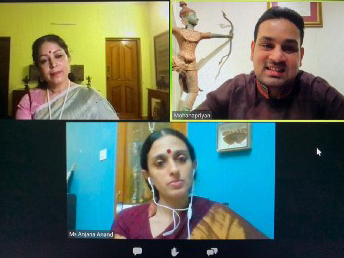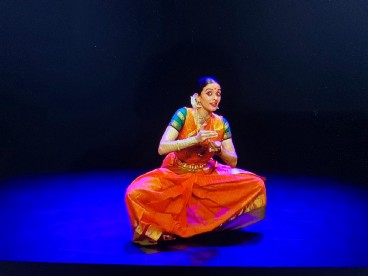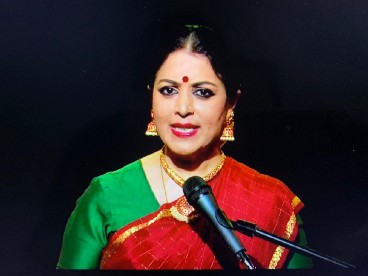What makes the Silapathikaram, the epic Tamil text a dancer’s delight? Why do dancers keep returning, time and again, to engage, and immerse themselves in this text to find new meanings and metaphors in it and translate those nuances in their dance? This session was conduced by the sensitive and talented dancer, Mohanapriyan Thavarajah, Principal Dancer of the Apsaras Arts. In a two-part lecture handled by Anjana Anand and Dr Srilatha Vinod, this text, yet again, came alive in all its beauty and glory. “There’s a storehouse of information in this text from every perspective,” said Anjana Anand, referring to her own love for the Silapathikaram, both from the point of a view as a dancer and a researcher, “As one of the greatest Tamil epics, and as a rasika of literature, first and foremost, one can find in it, an array of emotions — love, romance, heroism, revenge, dharma; it’s a true story of human struggle and also a powerful epic to document the three kingdoms of the Tamil country — Cholas, Pandyas and Cheras.”

Anjana said she was only exposed as a dancer to Sanskrit literature but deep diving into the Silapathikaram allowed her the possibility to understand not merely the text and language but also a piece of Tamil’s cultural history. For the demonstration, Anjana chose to depict eight verses from the Kaanal Vari, the 7th canto in the first book. In it, you hear both the voice of Kovalan and Madhavi. This canto is interesting also because it’s a turning point of sorts in the text, when the “seeds of distrust shown on Kovalan’s heart have become like wheels strangulating their love”.

Demonstrating five verses from this section, set to different ragams and capturing the many rasas each verse is layered with, Anjana’s demonstration also highlighted key aspects that go into a dancer determining to choose text to adapt it to her dance.
“Is all poetry adaptable for stage? if so, how do we go about choosing it? she said and shed light on three crucial aspects amongst them
a) Does the poetry have an inherent rhythm which makes it easier for a musician to set it to music?
b) Imagery in the text; does it have an inherently visual quality to it for a dancer to play around with it?
c) Dhwani or resonance; does the poetry allow the dancer to have multiple thoughts; is there something in the poetry that remains unsaid?

For honestly, if there’s not, where would the dancer really be?
Dr Srilatha Vinod, who has engaged time and again with the Silapathikaram chose to shared three poignant and powerful excerpts from her production on the Silapathikaram that premiered way back in 2004. Srilatha’s choice of the excerpts not only brought to fore the crucial turning points that make this text so classic and timeless at the same time but also was a true ode to the potential of dance to be able to create visual poetry on a bare stage with nothing but lyrics and music for company. It is the mastery of an artiste to identify — in the half a hour allocated to her — verses from a masterpiece that allow audiences, familiar and unfamiliar with the text, to get a glimpse of the potential and possibilities of the epic and of the dance to keep engaging with it. Befittingly, the first section paid obeisance to the sun and the moon and Srilatha chose the final excerpt also to be the sequence where Kannagi turns to the sun and the forces of nature to seek justice when she hears of the treacherous treatment meted out to her husband, Kovalan. The middle section we watched was the stunning dream sequence where Kannagi has a premonition of a tragedy that is round the corner, waiting to befall.
Srilatha’s performance that premiered at the Koothambalam in the Kalakshetra and where she worked closely with an artiste called Unnikrishnan, also trained in the Kalakshetra to create this work, is a timeless depiction of a text that has withstood the test of time and continues to inspire and invigorate dancers. But like Srilatha rightly said, “The epic demands deliberate introspection of characters and of the storyline, else it is a very tall mountain to climb!”
Truly so! But a dancer’s delight, nonetheless
Up next
9 September — 4.30 pm — 5.30 pm : Dr Ileana Citaristi — Sancharis in Odissi
9 September — 5.30 pm — 6.30 pm : Aditi Mangaldas — Re-Imagining dance during lockdown (IST)









